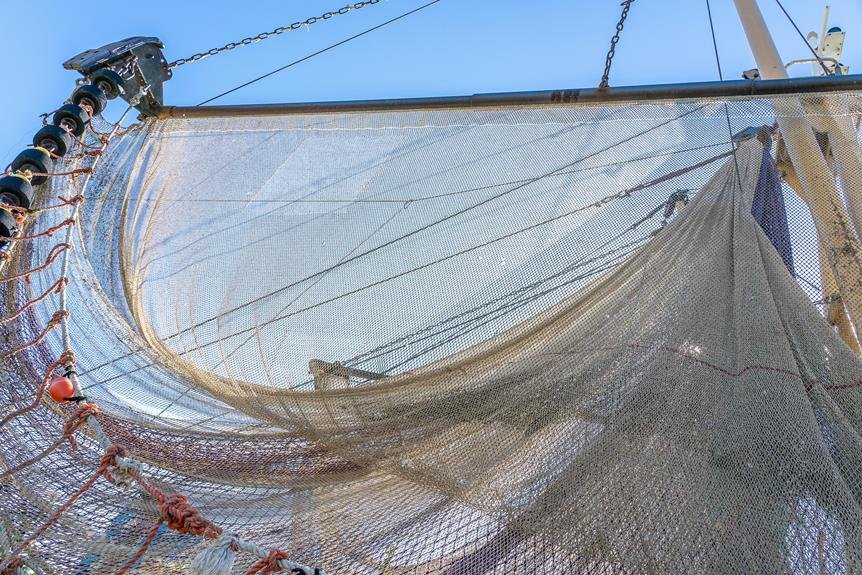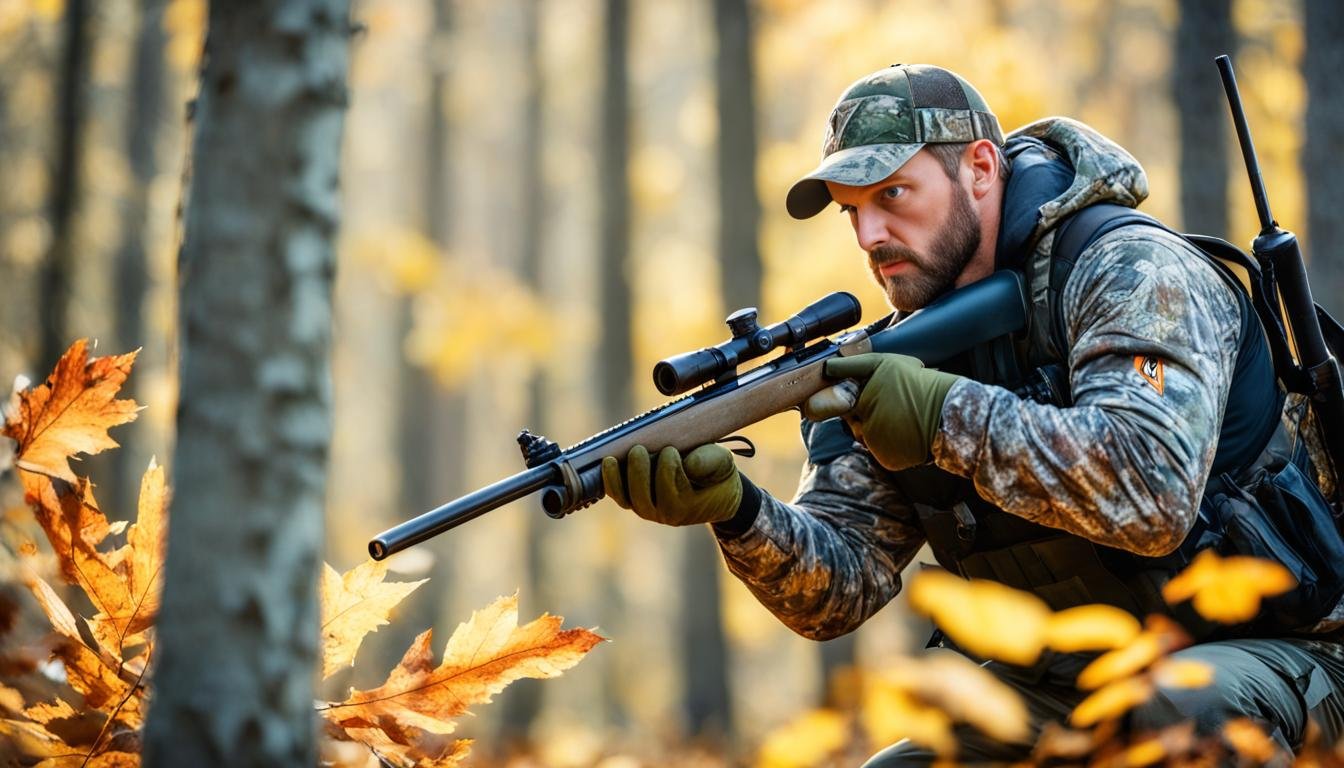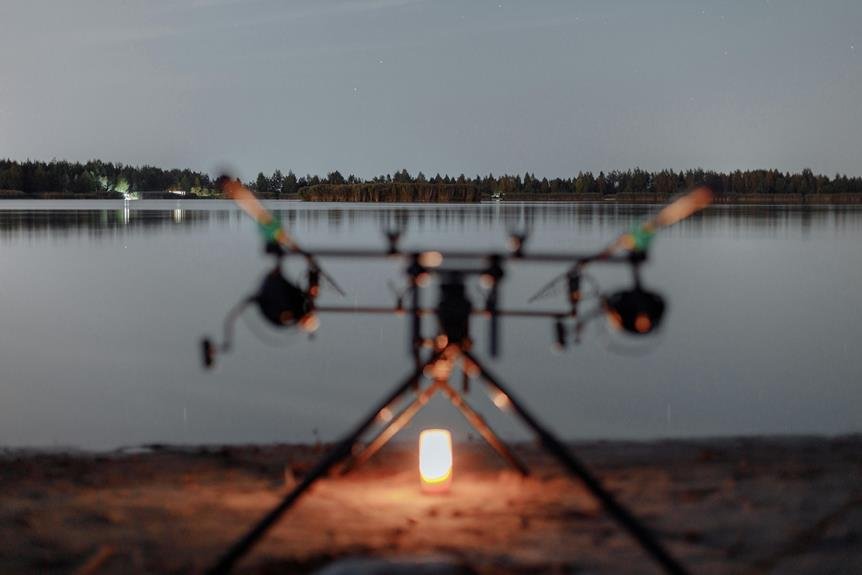We're not just casting a line, we're counting on a few reliable knots to bring in the big catch, and mastering those essential knots is what separates a great day of fishing from a frustrating one. We've got four basic fishing knots that guarantee a great day of catching fish. The Palomar knot is the strongest and most popular of all fishing knots, and mastering it is essential for achieving knot mastery. With practice and patience, we can tie knots with ease and confidence. Now, let's hook into the details and discover the secrets to a successful fishing trip.
Key Takeaways
- Mastering essential fishing knots like the Palomar, Rapala, Uni, and Surgeons knots guarantees a successful day on the water.
- Practice and patience ensure tying knots with ease and confidence, avoiding frustration and lost fish.
- The Palomar knot is the strongest and most popular fishing knot, providing a secure connection for fluorocarbon lines.
- Developing a consistent tying technique and watching video tutorials improve technique and build muscle memory.
- Choosing the right fishing knot for the job, such as the Uni knot for monofilament lines or Rapala knot for fluorocarbon lines, makes all the difference.
Mastering Essential Fishing Knots
As we head out on the water, mastering four basic fishing knots can guarantee a great day of catching fish, and it all starts with the Palomar knot, the strongest and most popular of them all. We're part of a larger fishing community that relies on these essential knots to land the big ones. In our pursuit of the perfect catch, we need reliable knots that won't let us down. That's why we focus on the most effective knots, like the Palomar, Rapala, and Uni knots. By mastering these knots, we can avoid the frustration of knotless rigs and lost fish. With practice and patience, we can tie these knots with ease and confidence, ensuring a successful day on the water.
The Unbeatable Palomar Knot
We rely on the Palomar knot, the strongest and most popular of all fishing knots, to secure our hooks and lures with confidence. Within fishing communities, the Palomar knot is widely recognized as the go-to knot for its exceptional strength and reliability. Mastering this knot is essential for achieving knot mastery, and we've found it to be a game-changer in our fishing experiences. By following a few simple steps, we can tie a Palomar knot that will hold up to even the strongest fish. With a little practice, we can tie this knot with ease, giving us more time to focus on what really matters – reeling in the big catch!
Attaching Lures With Rapala Knot
When attaching lures to fluorocarbon lines, we rely on the Rapala knot for its exceptional reliability and strength. This knot is our go-to for fluorocarbon lines because it provides a secure connection that can withstand the forces of fighting fish. To tie a Rapala knot, we start by tying an overhand knot five to six inches above the tag end of the fishing line. Then, we run the tag end through the eye of the lure or hook, and then through the overhand knot. By following these simple steps, we can guarantee a strong and reliable connection that will help us land more fish. Effective line management is vital in fishing, and the Rapala knot is an essential technique to master for a successful fishing trip.
Versatile Uni and Surgeons Knots
With its adaptability and reliability, the Uni knot is a versatile favorite among anglers, ideal for securing monofilament lines to terminal tackle. We find it's perfect for attaching lines to reels, and it's easy to tie. The Uni knot provides excellent knot strength, ensuring our fishing line remains secure even in tense situations. Another versatile option is the Surgeons knot, which excels at joining lines of different weights. This knot is a lifesaver when we need to connect two fishing lines quickly and reliably. By mastering the Uni and Surgeons knots, we can tackle various fishing scenarios with confidence. These knots have earned their place in our tackle box, and we're sure they'll do the same in yours.
Choosing the Right Fishing Knot
Selecting the right fishing knot for the job can make all the difference between landing a whopper and watching it slip away. We've all been there – reeling in what we thought was a monster catch, only to have it slip off the hook due to a faulty knot. That's why it's vital to choose the right knot for the type of fishing we're doing and the gear we're using. In our experience, the best way to do this is to consult with experienced anglers in online fishing communities and to invest in quality knot-tying tools. By doing so, we can confirm that our knots are secure and reliable, giving us the confidence to reel in those big catches.
Fishing Knots for Specific Lines
We've mastered the fundamental fishing knots, but now it's time to explore the specific knots suited for different types of fishing lines. Each line type requires a specific knot to ensure a secure connection and prevent line breakage. Here's a breakdown of the best knots for specific lines:
| Line Type | Recommended Knot |
|---|---|
| Monofilament | Uni Knot |
| Fluorocarbon | Rapala Knot |
| Braided | Palomar Knot |
| Joining Lines | Surgeons Knot |
Tips for Tying Knots Successfully
To guarantee our knots hold tight, we'll focus on developing a consistent tying technique and minimizing human error. Practice makes perfect, so we'll tie knots regularly to build muscle memory. We must ensure our lines and knots are clean and dry to prevent damage. We can also learn from others by joining online forums and fishing communities, where experienced anglers share their expertise and tips. By following these tips, we'll increase our chances of tying successful knots and landing more fish. Additionally, watching videos and tutorials can help us improve our technique. With patience and persistence, we'll master the art of tying knots and become more confident anglers.
Exploring Beyond the Basics
As we've mastered the fundamental knots, we're ready to expand our repertoire and explore more advanced techniques to tackle specific fishing situations. We can dive deeper into specialized knots for saltwater fishing, fly fishing, or even ice fishing. Online tutorials and fishing communities can provide valuable resources to help us improve our skills.
Here are some ways to take our fishing game to the next level:
- Explore specialized knots: Learn about knots designed for specific fishing styles or environments.
- Join online fishing communities: Connect with experienced anglers and learn from their experiences.
- Watch expert tutorials: Observe how professionals tie complex knots with ease.
- Practice and experiment: Try out new knots and techniques to develop muscle memory and confidence.
Conclusion
As we cast our lines into the water, our knots are the unsung heroes, holding fast against the fury of the catch. Like a sailor securing a ship to shore, we've anchored our lines with confidence, our knots a symbol of our connection to the unknown depths. With every tug, our trust in these essential knots grows, a bond as unbreakable as the fish that test our skills. With these knots, we're ready to reel in the memories, our lines a lifeline to the thrill of the catch.









